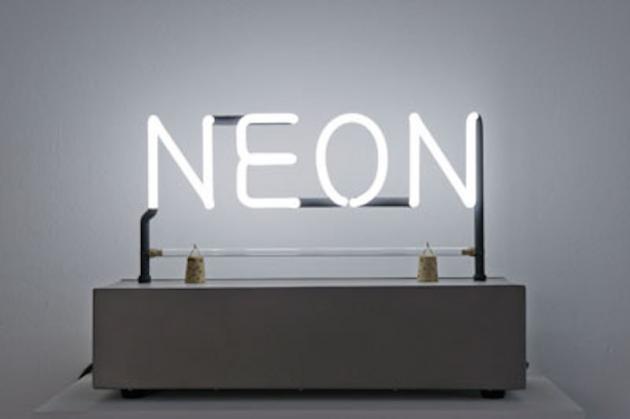A major new exhibition bringing together some of the most important neon artworks from the 1960s to the present day is presented this autumn at Blackpool’s art gallery, the Grundy. Entitled “NEON: The Charged Line”, this will be the most significant survey focusing solely on the medium of neon staged in the UK to date. The exhibition will include key pieces by some of the world’s foremost artists working in this medium, including Tracey Emin, Joseph Kosuth, Gavin Turk, David Batchelor, Martin Creed, Shezad Dawood, Tim Etchells, Cerith Wyn Evans, Graham Fagen, Robert Irwin, Bertrand Lavier, François Morellet, Joe Fletcher Orr, Eddie Peake, Mai-Thu Perret, Prem Sahib, Keith Sonnier and Evren Tekinoktay.
NEON: The Charged Line will see the municipal Edwardian galleries transformed into a series of eight rooms, each introducing work of different historical periods, geographic origins, and aesthetic interests. Whilst some artists, such as Kosuth or Emin, are more concerned with text and language others, including Eddie Peake, Mai-Thu Perret or David Batchelor, use neon as an extension of the drawn line, or for its three-dimensional sculptural or colourful qualities. Of note will be the inclusion of two French artists, Francois Morellet and Bertrand Lavier. These significant early practitioners, active since the 1960s, were amongst the earliest to experiment with neon in abstract and geometric forms. Morellet, who passed away in May this year, was a major figure in the world of French art but has been less widely seen in public galleries in the UK. This exhibition will be a rare opportunity to review some of his most celebrated works.The gallery will also be commissioning several outdoor artworks from artists including Tim Etchells, Graham Fagan and Prem Sahib, bringing the exhibition out into the streets of the iconic seaside town.
The title “The Charged Line” refers both to the scientific properties of this fluorescent gas medium but also its cultural history. The exhibition will coincide with Blackpool’s famous ‘Illuminations’ (2 September – 6 November 2016), a six-mile long lighting display which has taken place regularly along the promenade for over a century. The gallery will also be staging a parallel exhibition of early Art Deco neon designs from the early 1930s, when neon had only just arrived in the UK and was being pioneered in the seaside town.
Curator Richard Parry, formerly of London’s Hayward Gallery, said: “Neon is one of the most evocative mediums, carrying popular associations with cinema, advertising and nightlife. It is a light that is designed to be seen rather than merely to illuminate, and feels immediate upon the senses. In many ways, it is surprising that this technology, which is now more than a hundred years old, remains as powerful for artists as it does today. It is still being experimented with in new and imaginative ways and remains as relevant as ever. There has never been a more resonant moment to bring these outstanding international works together in Blackpool.”
Photo: Neon (1965), Joseph Kosuth, Photo by Marc Domage
NEON: The Charged Line Grundy Art Gallery, Blackpool, UK 1 Sept 2016 – 7 Jan 2017

